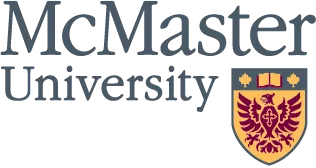
$300,000 Federal Boost for McMaster's Groundbreaking Bird Flu Research – What You Need to Know!
2024-11-28
Author: Emma
Two innovative research teams from McMaster University are set to revolutionize our preparedness against bird flu after being awarded a total of $300,000 in catalyst grants from the Canadian Institutes of Health Research (CIHR). This initiative aims to tackle H5N1 avian influenza, commonly known as bird flu, amidst rising concerns following the recent discovery of Canada’s first domestically acquired human case.
Health Minister Mark Holland recently announced this funding as part of a broader $5.2 million federal investment dedicated to bolstering H5N1 preparedness nationwide. This comes at a crucial time when public health and safety are paramount.
Leading one of the projects is Yingfu Li, a professor from the Department of Biochemistry and Biomedical Sciences, who is working on developing rapid antigen tests designed for easy self-detection of H5N1 infections. "Imagine having a test as simple as a glucose meter or pregnancy test," Li emphasizes. "These tests will empower individuals to check for infections conveniently at home or work, effectively minimizing the necessity for visits to testing facilities and consequently reducing potential exposure to the community."
Li's team also includes prominent researchers Matthew Miller and Leyla Soleymani, both of whom are integral members of McMaster's Michael G. DeGroote Institute for Infectious Disease Research (IIDR). The collaborative efforts have secured nearly $150,000 for the development of these rapid diagnostic tests.
In a parallel effort, Matthew Miller leads another CIHR-funded inquiry with a budget mirroring that of Li’s project. His research focuses on understanding the transmission dynamics and immune responses to bird flu within Canadian Hutterite communities, which are uniquely positioned at risk due to their proximity to significant migratory flyways and dependence on agriculture.
Miller elaborates, “Given that H5N1 has been prevalent in cattle and poultry farms lately, Hutterites are particularly susceptible to exposure.” This research holds potential implications not just for local farming communities but for public health strategies across Canada, providing crucial data for risk assessments.
Furthermore, the research teams will explore the immune responses to H5N1 across different age groups. This is vital as it will help identify which demographics may be at a higher risk for infections, ultimately guiding targeted preventative measures.
As bird flu remains a significant concern, these groundbreaking projects at McMaster University are a testament to the proactive measures being taken to safeguard public health. Stay tuned for updates as the researchers unveil their findings and recommendations that could shape how we respond to potential bird flu outbreaks in the future!









 Brasil (PT)
Brasil (PT)
 Canada (EN)
Canada (EN)
 Chile (ES)
Chile (ES)
 España (ES)
España (ES)
 France (FR)
France (FR)
 Hong Kong (EN)
Hong Kong (EN)
 Italia (IT)
Italia (IT)
 日本 (JA)
日本 (JA)
 Magyarország (HU)
Magyarország (HU)
 Norge (NO)
Norge (NO)
 Polska (PL)
Polska (PL)
 Schweiz (DE)
Schweiz (DE)
 Singapore (EN)
Singapore (EN)
 Sverige (SV)
Sverige (SV)
 Suomi (FI)
Suomi (FI)
 Türkiye (TR)
Türkiye (TR)